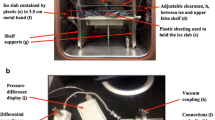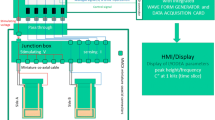Abstract
One of the current methods for cycle optimization in primary drying to is develop a graphical design space based on quality by design (QbD). In order to construct the design space, the vial heat transfer coefficient (Kv) is needed. This paper investigated experimental factors that can affect the Kv result, examined the relationship between the batch average Kv and Kv values for individual vials, and recommended best practices for measuring Kv. Factors investigated included the technique for measuring ice temperature, shelf temperature, the use of a radiation shield on the door of the freeze-dry chamber, and shelf spacing. All experiments reported here used a chamber pressure of 100 mTorr. The most important factor was the technique for ice temperature measurement, where it is important to assure that any restrictions to vapor flow at the top of the vial are the same between monitored and non-monitored vials. Another factor that was found to play a role was the shelf temperature whereby the lower the shelf temperature, the larger the “edge effect,” and the larger the average Kv. Factors that were found to not have a significant effect were the use of a radiation shield inside the chamber door and the shelf spacing. Being aware of these factors and knowing best practices when determining the vial heat coefficient will lead to more accurate design spaces and better cycle optimization.






Similar content being viewed by others
References
Philippidis A. The top 15 best-selling drugs of 2016. Genetic Engineering & Biotechnology News. 2017. http://www.genengnews.com/the-lists/the-top-15-best-selling-drugs-of-2016/77900868. Accessed 05 Sep 2017.
Nail SL, Searles JA. Elements of quality by design in development and scale-up of freeze-dried parenterals. Biopharm Int. 2008;21(1)
Mockus LN, Paul TW, Pease NA, Harper NJ, Basu PK, Oslos EA, et al. Quality by design in formulation and process development for a freeze-dried, small molecule parenteral product: a case study. Pharm Dev Technol. 2011;16(6):549–76.
Pikal M. Use of laboratory data in freeze drying process design: heat and mass transfer coefficients and the computer simulation of freeze drying. PDA J Pharm Sci Technol. 1985;39(3):115–39.
Pikal M, Roy M, Shah S. Mass and heat transfer in vial freeze-drying of pharmaceuticals: role of the vial. J Pharm Sci. 1984;73(9):1224–37.
Gieseler H, Kessler WJ, Finson M, Davis SJ, Mulhall PA, Bons V, et al. Evaluation of tunable diode laser absorption spectroscopy for in-process water vapor mass flux measurements during freeze drying. J Pharm Sci. 2007;96(7):1776–93.
Kuu WY, Nail SL, Sacha G. Rapid determination of vial heat transfer parameters using tunable diode laser absorption spectroscopy (TDLAS) in response to step-changes in pressure set-point during freeze-drying. J Pharm Sci. 2009;98(3):1136–54.
Rambhatla S, Pikal MJ. Heat and mass transfer scale-up issues during freeze-drying, I: atypical radiation and the edge vial effect. AAPS PharmSciTech. 2003;4(2):22–31.
Ganguly A, Varma N, Sane P, Bogner R, Pikal M, Alexeenko A. Spatial variation of pressure in the lyophilization product chamber part 1: computational modeling. AAPS PharmSciTech. 2017;18(3):577–85.
Sane P, Varma N, Ganguly A, Pikal M, Alexeenko A, Bogner RH. Spatial variation of pressure in the lyophilization product chamber part 2: experimental measurements and implications for scale-up and batch uniformity. AAPS PharmSciTech. 2017;18(2):369–80.
Author information
Authors and Affiliations
Corresponding author
Rights and permissions
About this article
Cite this article
Wegiel, L.A., Ferris, S.J. & Nail, S.L. Experimental Aspects of Measuring the Vial Heat Transfer Coefficient in Pharmaceutical Freeze-Drying. AAPS PharmSciTech 19, 1810–1817 (2018). https://doi.org/10.1208/s12249-018-0998-z
Received:
Accepted:
Published:
Issue Date:
DOI: https://doi.org/10.1208/s12249-018-0998-z




